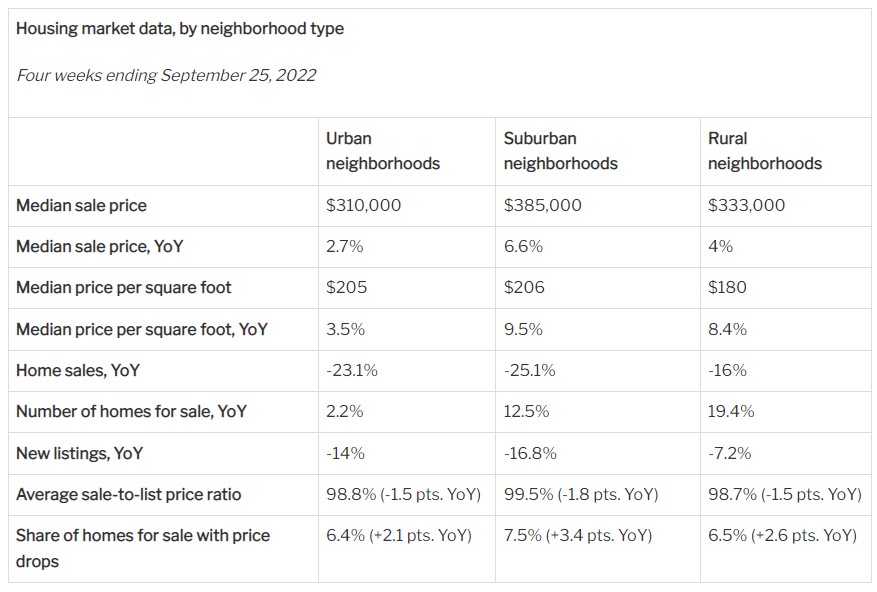 The housing market went topsy-turvy when the Covid-19 pandemic came to our country’s shores early in 2020. Of the many things that seems to be here to stay is remote work, which altered many people’s housing preferences as they fled urban, corona-virus hotspots for the less crowded suburbs.
The housing market went topsy-turvy when the Covid-19 pandemic came to our country’s shores early in 2020. Of the many things that seems to be here to stay is remote work, which altered many people’s housing preferences as they fled urban, corona-virus hotspots for the less crowded suburbs.
The sheer number of people who moved for one reason or another during the pandemic has now created an interesting statistic: the typical home in suburban neighborhoods nationwide was worth $206 per square foot during the four weeks ending September 25, just slightly higher than $205 in urban neighborhoods.
By the numbers, urban square footage increased just 3.5% year-over-year while suburban square footage grew over three times as fast coming in a 9.5%, while square footage in rural areas increased 8.4% to $180.
Price per square foot is a useful statistic tracked by Redfin because it is a valuable tool for comparing price growth across different neighborhood types because it is a direct comparison of how the value of space is changing in one neighborhood type versus another.
Growth in overall home-sale prices is also slowing fastest in cities. The typical home in urban areas nationwide sold for $310,000, up 2.7% from a year earlier. That’s compared with a 6.6% increase to $385,000 in the suburbs and 4% to $333,000 in rural neighborhoods. Homes are the least expensive in urban areas because they’re typically the smallest.

“Urban home prices soared in 2021 as homebuyers gravitated back to city centers as the pandemic waned and affluent Americans–motivated by record-low rates–decided they wanted the best of both worlds: Homes with plenty of space for working from home, but located in walkable areas near shops and restaurants,” said Sheharyar Bokhari, Redfin’s Senior Economist. “Today’s buyers can’t afford everything on their wish list, so many are prioritizing space over walkability.”
“Urban neighborhoods will likely see prices–and price per square foot–fall on a year-over-year basis before suburbs and rural areas,” Bokhari continued. “House hunters may want to shift their search to urban neighborhoods, where they may find lower prices to help counteract the costliness of today’s mortgage rates. And now that space is just as valuable in the suburbs, it’s less likely that they’ll sacrifice space.”
Redfin notes that housing activity has slowed in all three types of neighborhoods since the broad cooling the market started exhibiting earlier this year. Home sales are down more than 15% year over year in urban, suburban and rural areas as many prospective buyers are priced out of the market. Sellers are pulling back, too, with new listings down at least 7% in all neighborhood types.
Click here to view Redfin’s report in its entirety, including top-level breakdowns of statistics for notable cities.

 theMReport.com Your trusted source for mortgage banking news
theMReport.com Your trusted source for mortgage banking news








